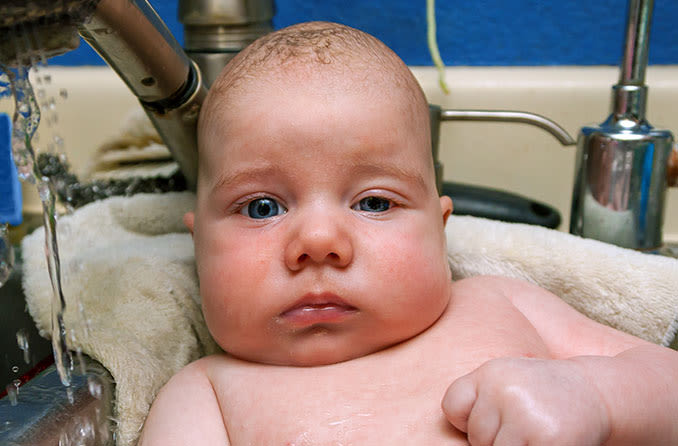Infant Ptosis Causes, Symptoms and Treatment

When a baby is born with one or two drooping eyelids, it can signal a condition called ptosis. The condition can also become visible shortly after birth. When an infant is diagnosed with ptosis and they’re less than one year old, it’s usually referred to as congenital ptosis or congenital blepharoptosis.
Weakness in the eyelid muscle called the levator palpebrae superioris is behind most cases of congenital ptosis. The levator muscle is responsible for lifting and lowering the upper eyelid. Any dysfunction in the muscle or corresponding nerves causes the eyelid to droop farther than normal.
Ptosis in babies is not common. It only occurs in about 1 of every 840 live births, according to a National Institutes of Health study conducted over a 40-year period.
Treatment may or may not be required, depending on the severity and underlying cause of ptosis.
SEE RELATED: Ptosis in children
Signs and symptoms of ptosis in babies
Droopy eyelids are the most prominent sign of ptosis in babies. In more severe cases, the eyelids can droop low enough to block the child’s vision. If left untreated, severe ptosis can lead to astigmatism, amblyopia and even potential vision loss.
Symptoms will vary depending on the cause and severity of an infant’s ptosis. In addition to visible eyelid drooping in one or both eyes, ptosis symptoms can also include:
Watery eyes and excessive tearing
Frequent eyebrow raising when trying to see
Holding the head in unusual positions to see
When eyelids block an infant’s vision, they may hold their chin higher than normal to see under the sagging eyelid. Without treatment, these unusual head positions can eventually lead to structural problems in the neck and head.
Possible causes of droopy eyelids in babies
When a newborn has droopy eyelids, they can be caused by a larger disorder or condition. Sometimes, however, the cause is unknown and may be attributed to an anomaly during prenatal development.
Family genes can be a factor in newborn ptosis, but it’s uncommon. Only around 12% of children with congenital ptosis had a family history of ptosis, according to the National Institutes of Health study mentioned earlier.
When doctors are able to pinpoint the underlying cause of congenital ptosis, it may relate to one of the following conditions:
Injury during the birthing process
A neurological disorder
A muscular or neuromuscular disorder
A tumor in or around the eyelid
Refractive errors like nearsightedness or farsightedness
There are several types of ptosis, and the types are categorized based on the underlying cause of the condition.
Infant ptosis treatment
Depending on the severity of ptosis, a doctor may recommend ptosis surgery to repair an infant’s droopy eyelid(s). This largely depends on how much a child’s vision has been impacted.
If vision is affected, a doctor may suggest immediate surgery to avoid any future complications. If vision is not affected, the doctor may recommend postponing surgery for a few years or avoiding it altogether.
When the eyelid’s levator muscles are causing ptosis, the goal of surgery will be to tighten these muscles. After surgery and recovery, an infant will be able to lift the affected eyelids more effectively.
Outside of surgery, a doctor may suggest an eye patch or custom glasses to treat the vision problems that can stem from ptosis.
When to see a doctor
If your baby develops drooping eyelids, either on one side or both, schedule an appointment with an eye doctor or pediatrician. Never attempt to treat an infant with ptosis home remedies or other ptosis treatments without talking to an eye doctor.
With the help of a few common eye tests, they will be able to correctly diagnose the cause of your baby’s droopy eyelids and determine the best methods of treatment, if necessary.
LEARN MORE ABOUT PTOSIS in our Ptosis FAQs
Page published on Monday, September 21, 2020






